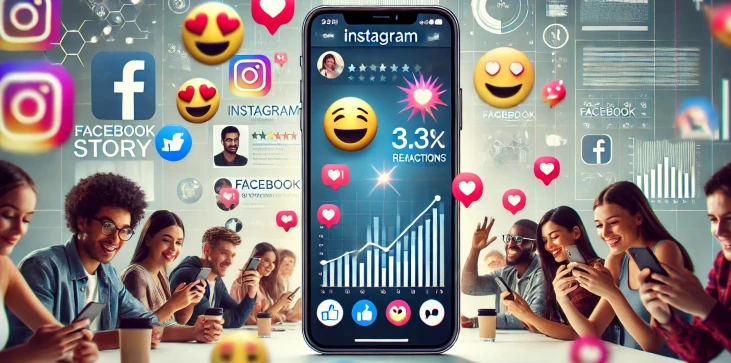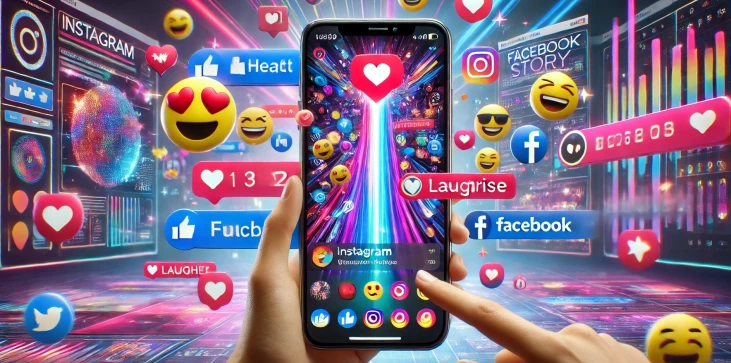
In today's fast-paced social media environment, story reactions have become a crucial tool for both personal users and businesses to connect with their audiences. Available on Instagram and Facebook, story reactions allow users to quickly respond to a story with a predefined emoji, offering a lightweight form of engagement. For brands and influencers, mastering the use of story reactions can result in improved interaction metrics, fostering a sense of connection between the content creator and the audience. This article will explore the best strategies to make the most of story reactions and how they can contribute to higher engagement on these two leading social media platforms.
Story reactions are short, instant feedback mechanisms that allow users to interact with Instagram and Facebook stories through emojis like hearts, laughter, or surprise. Unlike comments or DMs, reactions are quick and less formal, making them appealing to a broader audience. Story reactions encourage more interaction with content, giving users a way to engage without the commitment of writing a message. For brands, this means a potential increase in viewer engagement metrics, which could improve the visibility of future stories in users' feeds.
To effectively increase story reactions, it's important to create content that invites participation. Asking your audience for feedback or reactions within the story itself is a direct and simple method. You can also use interactive elements like polls, quizzes, and questions, which can lead to more engagement and, in turn, more story reactions. Posting relatable, emotional, or humorous content is another great way to trigger spontaneous reactions, as users tend to respond emotionally to this type of content.
Instagram and Facebook algorithms are designed to promote content that drives high engagement, and story reactions play a part in this equation. The more interactions a story gets, the higher the chance it will be shown to a larger audience. This visibility boost can lead to increased follower growth, more story views, and overall improved brand awareness. Understanding how reactions impact the algorithm can help you tailor your stories to maximize engagement.
Story reactions provide valuable insights into audience preferences and behaviors. By analyzing which stories receive the most reactions and the types of reactions, you can gauge the kind of content that resonates best with your audience. For instance, if heart emojis dominate, it might indicate that your audience prefers more personal, feel-good content. On the other hand, if reactions like laughter or surprise are more common, humorous or unexpected content might be your best route to increased engagement.
Story reactions on Instagram and Facebook offer a unique opportunity to increase engagement and gather valuable audience insights. By understanding the mechanics of these reactions and strategically creating content to encourage them, you can significantly boost your presence on these platforms. Whether you're an individual looking to connect more with your followers or a brand aiming to expand your reach, story reactions can play a vital role in achieving your social media goals.

Yes, you can use Instagram and Facebook's insights tools to track how many reactions your stories receive over time. This allows you to identify trends and optimize your content strategy based on what engages your audience the most.
Yes, story reactions can positively influence the algorithm by signaling to Instagram and Facebook that your content is engaging. This can lead to increased visibility in your followers’ stories feeds, ultimately boosting your overall reach.
Emotional, relatable, or humorous content typically receives more reactions. Content that encourages participation, such as polls, quizzes, and interactive stickers, also tends to prompt more users to engage with story reactions.